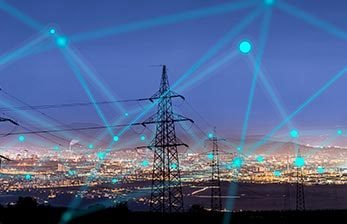Ways To Use Artificial Intelligence In Education
Do you know that AI is very present in all our lives and has pervaded almost every space? Not just the imaginary humans with chips portrayed by fiction writers and science fiction movie makers but just look around.
Google searches, automatic sensors for reversing your car, automatic lens adjustments and light settings for those perfectly timed selfies, Google maps to take you straight to your destination, MRIs to detect those illnesses you never thought you had, multiple-choice answer sheets scored automatically on online learning sites, paying bills online, that favorite app you just downloaded and everything I between. They all run on the artificial intelligence courses of the self-learning algorithms of machine learning help make machines truly aid to human thinking through deep learning and neural networks.
Though AI has actually taken over most of the human tasks, they are still a long way off from replacing human beings and the one area where they have tremendous application potential is in education. Let’s reiterate that the basic aim of artificial intelligence courses and neural thinking is not to replace humans but to help them with repetitive tasks and data sifting far beyond the limits of the best human brains. So, in the future, AI and humanoid robots will not replace teachers. But they will transform how we learn, and what to learn and go a step further by helping us learn. That includes the teachers too who are constantly learning too!
Why AI matters in education:
Let us explore how AI is going to bring its benefits to the education experience of the future. The class sizes keep increasing with compulsory education and teachers are often facing many challenges in giving attention and help to the large numbers of students. A big challenge like this has been simplified by incorporating computer programs that allow each student to follow his own pace and learning curve. Individualized learning modules can help find knowledge gaps and personalize the learning materials to fill in the gaps.
Teachers can now get truly involved in teaching and rectifying the lacunae in the learning process. Besides, the teachers can also get recommendations on how to rectify the issues, what learning materials to use for personalizing the process and much more to help herd the students towards the right levels of comprehension and skills required. This could also be used for learning processes of differently challenged students.
The newer methods of experiential learning at educational institutions use advanced techniques of AI, machine learning and deep learning in instructing and teaching like chatbots and learning bots. A differentiated AI style of learning deals with the most effective style to help the student learn. Adaptive artificial intelligence courses based learning curates the learning exercises matching them to the student’s needs and knowledge gaps. Competency-based AI tests aid the students to gauge their learning levels and progress from thereon. Using all these three types of learning AI can test how well the students can adapt their learning to applications of it and thus promote the progress of students based on individual interests.
The benefits:
Some of the benefits of artificial intelligence courses that can be harnessed are:
1. Grading, scoring, and such repetitive tasks can easily be handled by AI.
2. Personalization of educational software can be need-based and adapted to individual learning curves.
3. Lacunae and learning gaps can be predicted and rectified with suggestions for learning materials and courses needed to improve.
4. Tutoring through subject-specific learning bots, online self-paced courses etc can support students.
5. The feedback route is almost instantaneous and can be gainfully harnessed by both educators and learners.
6. AI has changed the way we search for and interact with data. Just Google for information on anything and everything is what 95% of the people do to find information.
7. AI will make teachers more effective and ever-learning educators.
8. AI will develop human skills and make trial-testing-and-error learning the norm.
9. Data harnessing and empowerment will change the learning experience using AI to find, support and teach students.
10. AI can offer both offline and online resources which will alter where we learn, how and who teaches them and help apply to learn to basic implicational skills.
Conclusions:
What do you think would be the results of AI in education and the learning process? Yes, the education field is going to be very different from what we now see it as. Skills in learning applications will count for more. Jobs will be linked to skills and not degrees. Certification will emerge as a measurable tool of skills. And, if you want to explore more, why not do artificial intelligence courses at the reputed Imarticus Learning institute?

